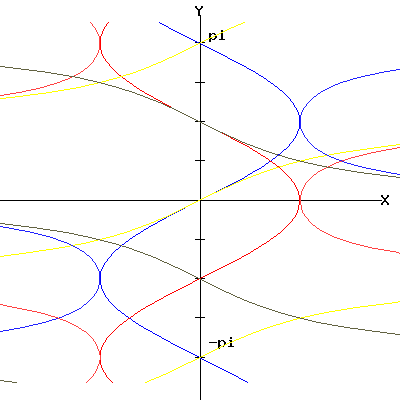| |
Egwald Mathematics: Trigonometry
by
Elmer G. Wiens
Egwald's popular web pages are provided without cost to users.
Follow Elmer Wiens on Twitter:

Natural trig functions | Inverse trig functions
Inverse Natural Trigonometric Functions
The natural trigonometric functions, like sine and cosine, yield a number from an angle. Thus, for z = sin(alpha), if the angle alpha = pi/6, then .5 = sin(alpha). Suppose, now, we want to find the angle, alpha, such that sin(alpha) = z = 1. Then alpha = pi/2, since sin(pi/2) = 1. Once we know alpha, we can find the values of x and y that produce the angle alpha on the circle on the natural trig page functions.
Since we can do this for any angle, we can define a new function called the inverse sine or "arcsin" function by alpha = arcsin(z). For convenience, let us re-label the variables alpha and z, by y and x. (Don't confuse these new y and x labels with the ones on the circle that locate the point P).
Furthermore, we can define inverse functions for each of the natural trigonometric functions: arcsin, arcos, arctan, arccse, arcsec, and arccot.
| arcsin | |
| arccos | |
| arctan | |
| arccsc | |
| arcsec | |
| arccot | |
|

|
|
|












